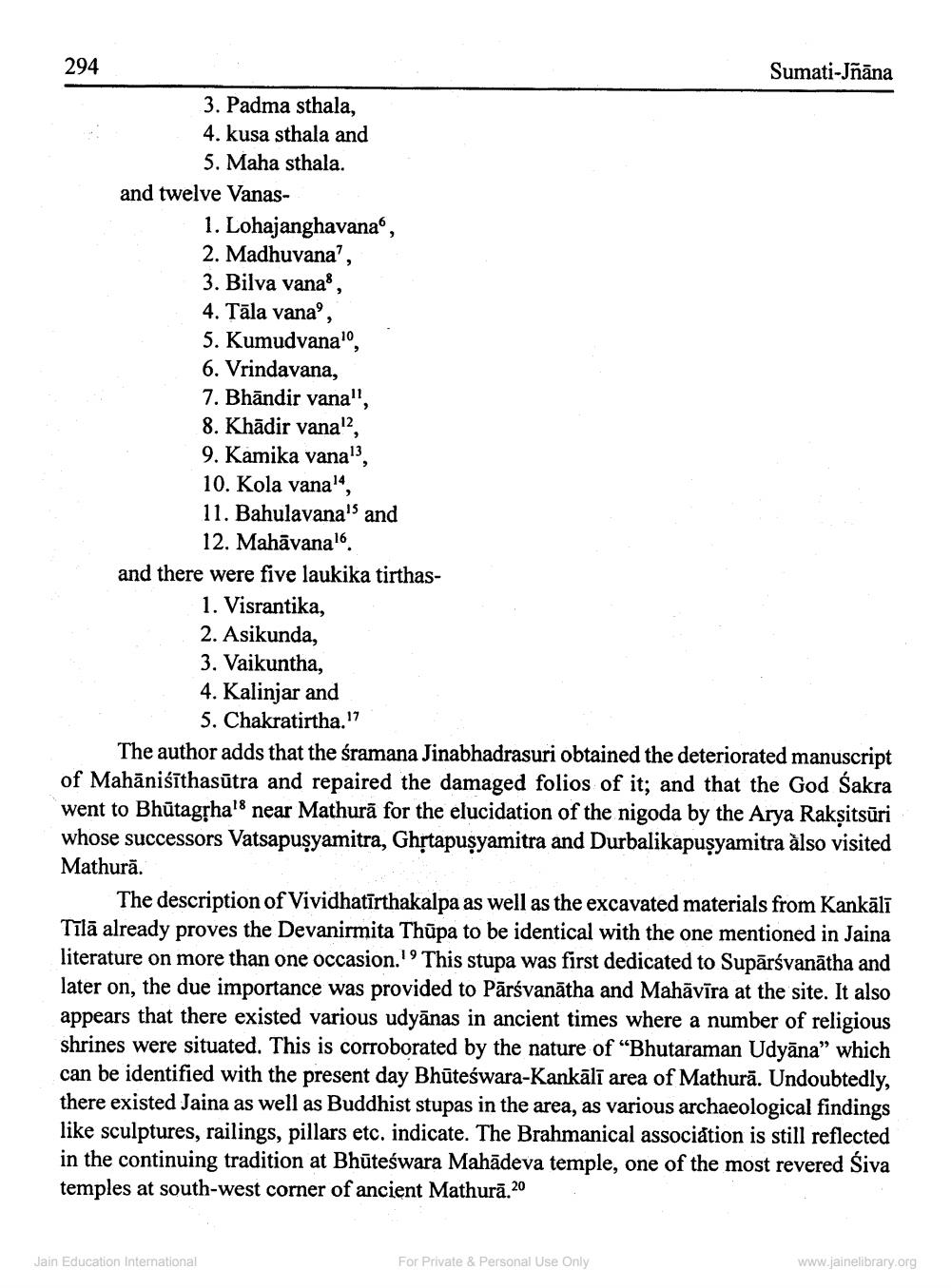________________
294
Sumati-Jñāna 3. Padma sthala, 4. kusa sthala and
5. Maha sthala. and twelve Vanas
1. Lohajanghavana, 2. Madhuvana?, 3. Bilva vana, 4. Tāla vana', 5. Kumudvana", 6. Vrindavana, 7. Bhāndir vana", 8. Khādir vana', 9. Kamika vana"}, 10. Kola vana!, 11. Bahulavana's and
12. Mahāvana! and there were five laukika tirthas
1. Visrantika, 2. Asikunda, 3. Vaikuntha, 4. Kalinjar and
5. Chakratirtha." The author adds that the śramana Jinabhadrasuri obtained the deteriorated manuscript of Mahāniśīthasūtra and repaired the damaged folios of it; and that went to Bhūtagrhal near Mathurā for the elucidation of the nigoda by the Arya Raksitsūri whose successors Vatsapușyamitra, Ghịtapușyamitra and Durbalikapușyamitra also visited Mathurā.
The description of Vividhatīrthakalpa as well as the excavated materials from Kankālī Tīlā already proves the Devanirmita Thūpa to be identical with the one mentioned in Jaina literature on more than one occasion. This stupa was first dedicated to Supārsvanātha and later on, the due importance was provided to Pārsvanātha and Mahāvīra at the site. It also appears that there existed various udyānas in ancient times where a number of religious
situated. This is corroborated by the nature of "Bhutaraman Udyāna" which can be identified with the present day Bhūteswara-Kankālī area of Mathurā. Undoubtedly, there existed Jaina as well as Buddhist stupas in the area, as various archaeological findings like sculptures, railings, pillars etc. indicate. The Brahmanical association is still reflected in the continuing tradition at Bhūteswara Mahādeva temple, one of the most revered Siva temples at south-west corner of ancient Mathurā. 20
Jain Education International
For Private & Personal Use Only
www.jainelibrary.org




